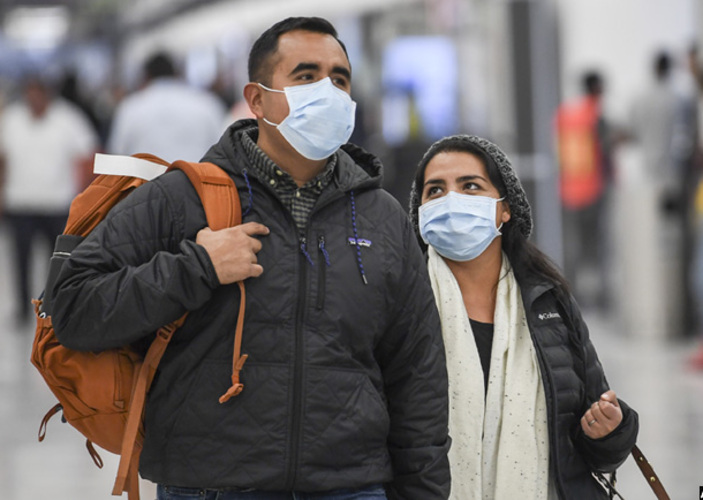Coronavirus: How we got stuck in Wuhan
Feb 05, 2020
Although the pandemic has affected thousands and claimed the lives of 362 people, I am still safe and in good health.

Richard Kisubi, the writer is an MBA student at Central China Normal University Wuhan, Hubei. (Courtesy photo)
CORONAVIRUS MY CHINA STORY
It was at the beginning of the year when I started reading stories on WeChat, a popular Chinese social media platform about the outbreak of a new virus in Wuhan.
At first, I ignored the stories; it was exam time and I needed to concentrate on better grades.
On January 10th, as I was going for my final exam, a friend told me about the virus and I jested about it by reminding him of a popular saying about Wuhan; "Wuhan, Different Every Day." and I assured him that the virus will be curbed in 2 weeks. He, however, advised me to take more precautions.
Aware that it was time for China's Spring Festival rush, on January 16th, I rushed to the market to purchase groceries to run me through the holiday.
During the festive period, hundreds of millions of trips are made across and out of the country; most shops close as Wuhan residents travel to the countryside for the most important holiday on the Chinese Lunar Calendar.
On Monday, January 20th, the International Students Affairs' Office issued an official notice about the outbreak of the Coronavirus.
The notice fomented fear, panic and even despair among the students. I decided to keep myself indoors and negated all my engagements outside as my health is a topmost priority.
In a bid to contain the fast spread of the virus, the morning hours of January 23rd, saw the government announce a curfew, bringing the city on lockdown.
No person in Wuhan was allowed to enter or exit the city with immediate effect. Train stations and the airport were shut down; the city bus, subway, ferry, and long-distance shuttle buses were also temporarily closed.
This made the situation unpleasant because shops and restaurants were closed, the city streets became empty.
However, quarantining Wuhan, the epicenter of the virus and home to over 11 million people and a major transport hub in the Central Hubei province of China, was a great intervention that inculcated hope and unity in Wuhan in a fight against the fast spread of the virus.
Further, the construction of two specialized hospitals of Huoshenshan and Leishenshan with a capacity of 2,300 beds and completed in just 2 weeks for the rapidly rising number of new Coronavirus patients in Wuhan. Such a response is unheard of elsewhere on this planet.
 Precautions have been taken to prevent the disease
Precautions have been taken to prevent the diseaseCentral China Normal University also immediately demonstrated a high degree of responsiveness and made safety students a priority.
Students were offered free surgical masks, hand wash, and thermometers. Information about the spread and prevention of the virus was disseminated in strategic public spaces. They also embarked on a door-to-door campaign to create more awareness about the Coronavirus pandemic.
On February 2nd, the school started offering meals; breakfast, lunch, and dinner on the first floor of every dormitory so that no one is allowed to move out since the virus is at the peak for the next one week. With the heat of the moment, such interventions helped make me calm down my nerves.
Although the pandemic has affected thousands and claimed the lives of 362 people, I am still safe and in good health. Staying indoors in such a period is the safest thing one can do. I instigated engaging in indoor physical exercises to keep fit.
The Chinese authorities have demonstrated that with synergy and knowledge-driven action, the Coronavirus can be conquered. Every cloud has a silver lining, let us stay calm, take precautions, China will soon contain the situation.
